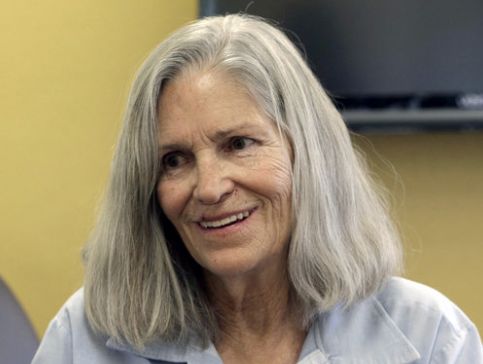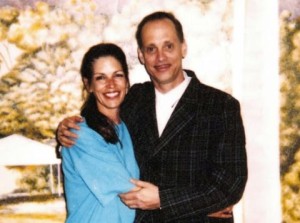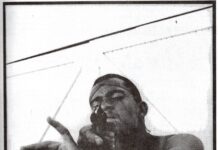
Gov. Jerry Brown rightly put the kibosh on parole for Manson Family killer Leslie ‘LuLu’ Van Houten, but he has opened the prison gates for well over a thousand other lesser-known convicted killers
By Mark Cromer
It was a pleasantly surprising headline for many Californians last week: ‘Van Houten Is Denied Parole’ as The Los Angeles Times put it on its front page. For readers of the hometown newspaper in the city where Van Houten and her fellow followers of Charles Manson unleashed their grisly killing spree in the summer of 1969, the news inspired a collective sigh of relief that another murderer was not going to be released to once more walk among them.
Governor Jerry Brown’s decision to ignore the state’s Parole Board recommendation and deny Van Houten parole no doubt also came as at least a mild relief to Hillary Clinton’s campaign, as Brown announced it just as the Republicans had wrapped up their ‘law and order’ convention in Cleveland. The GOP nominee Donald Trump is now virtually certain to make crime a national issue in manner not seen in a generation, when George H. W. Bush brazenly capitalized on it in 1988 as he successfully tarred Michael Dukakis as a ‘Massachusetts liberal’ for his disastrous decision to furlough a convicted killer named Willie Horton—who went on to rob, beat and rape a woman while on his state-sanctioned vacation from prison.
Clinton has no Horton lurking in her political past and despite Republican attempts to conjure forth similarities with Clinton’s 1975 legal defense of Arkansas child-rapist Thomas Alfred Taylor the effort falls flat for a variety of reasons, but none more glaring than Clinton was the accused’s lawyer and she was obligated to provide him with the most effective affirmative defense that she could muster. Her real exposure in the Taylor case was her unseemly chuckling about how she was able to help her client beat the rap (he was sentenced to a year for raping a 12-year-old girl) while suggesting somewhat glibly that she thought he was guilty. Clinton had a grim job to do in that case, one she should be unflinchingly stoic about publicly and either privately praying about or drinking over her doubts or both, but not dropping wisecracks about the case to reporters.
Thus had Brown signed the parole order for Van Houten, aka ‘Lulu’, aka California Department of Correction’s Inmate Number W13378, Trump’s campaign would have been delivered yet another golden opportunity to portray not only Clinton but the entire Democratic Party’s leadership as completely out of touch with the American people on the issue of crime and punishment, particularly when it comes to violent criminals. With the Supreme Court’s ideological direction set to be cemented with at least two new appointments over the next four years, Trump could have used Brown’s parole of Van Houten as another exhibit of a criminal justice system that has been turned on its head and ominously warned voters that a Clinton administration will appoint not just soft-on-crime judicial liberals to the Supreme Court, but will fill the critical benches of the federal judiciary with them as well, all but ensuring the end of the death penalty and the dark dawn of a new era of furloughs and paroles for convicted killers across the country.
But Brown didn’t stumble into a blunder that would have permanently sullied his own political reputation that he has spent much of the past five years in his second act as governor seeking to rehabilitate from its 1970s and early ‘80s patina of a bleeding heart liberal.
And for all the headlines that Brown’s shutdown of Van Houten’s freedom ride garnered, a closer look at the actual numbers of convicted killers that are being released from prison on parole in California is enough to make one’s proverbial blood run cold with dread, and then perhaps boil with rage.
According to the Prison Legal News, a monthly publication of the prison inmate advocacy group Human Rights Defense Center, California under Brown’s return to the governorship has seen a record number of prisoners sentenced to ‘life’ being set free. It’s worth noting that close to 90% of inmates in California sentenced to life in prison have been convicted of murder, with the rest have been convicted of heinous sex crimes, kidnapping or both; and that California is only one of three states where the governor has the final determination on whether parole will be granted.
All of that is to say when it comes to ‘lifers,’ we’re talking about convicted killers or child-raping kidnapers and ultimately the buck stops at the governor’s desk.
With Brown sitting behind that desk as now the longest serving governor in California history, nearly 1,600 cases where the lifers had been recommended for parole by the Parole Board and Brown has approved more than 1,300 of them for release. According to the magazine’s inmate analysis, during the first two and a half years of Brown’s renewed tenure in Sacramento he released more convicted killers than all of the murderers paroled under the three previous California governors combined.
Gov. Arnold Schwarzenegger reversed the Parole Board’s recommendations on convicted killers more than 70% of the time. Brown has turned that number on its head and then some, reversing the board’s recommendation less than 20% of the time. The notable exceptions to Brown’s live release policy usually have something in common: they are killers of particular infamy that tend to draw public attention, something Brown would prefer to avoid if he is going to cut them loose.
Convicted murderers released to prowl the streets again just doesn’t have the same promising ring to for voters as say high-speed rail or a cleaner air and water project carries in the media.
But Brown’s rejection of Van Houten’s parole, rare as it was, brought to light some of the more interesting elements of the dynamic currently in play in California and across the nation in the debate over so-called ‘criminal justice reform,’ which is the parlance used to define the bi-partisan movement to rejigger the sentencing structure to keep allegedly non-violent crimes such as dope dealing, car thefts and home burglaries from being a straight-to-prison offenses.
By reducing the numbers of men—and that’s really who we are talking about here by overwhelming numbers—from going to prison for first or even second time offences in these categories labeled non-violent (then perhaps ‘victimless’ as well by extension?), the argument is some other intervention other than incarceration stands a much better chance at successfully diverting the offender from a life of crime by keeping them out of prison.
This is the crux of it; that if rehabilitation is the goal then prison, by its very nature, cannot be the answer. Prison and all that it entails in the nightmare of its reality precludes any real hope of sustainable inmate rehabilitation on any notable scale.
Then there is the Leslie Van Houten case.
She was not a car thief, a drug hustler or a breaking and entering specialist—well, actually, she apparently dabbled in all of the above and yet quickly graduated to oh so much more, magna cum laude—on the night of August 10, 1969, after holding her victim down while her husband Leno LaBianca was brutally slaughtered in the living room, Van Houten buried her own blade in LaBianca at least 16 times with a gleeful pride of accomplishment.
In his statement explaining his decision to keep Van Houten behind bars, Brown took care to spell out the horrifying nature of the crimes as well as a few more obscure nuggets about Van Houten behind bars, perhaps most notably that years after her conviction she told a state psychologist that while she had no desire at that moment to kill anyone, if she decided she wanted to murder some more “she would have no difficulty doing it again.”
Further, during her first trial (she actually was tried multiple times) Van Houten dismissed the suggestion she should feel remorse for the LaBianca murders by curtly stating “sorry is only a five letter word.”
Van Houten was just acknowledging the obvious: she’d been there, done that, so what’s the big deal? Hack a screaming woman to death who’s begging for her life? Easy peasy. Not that she wants to do it again necessarily, but it’s on her résumé for future reference.
And while Van Houten was convicted in the slayings of the LaBiancas, her defense attorney Ronald Hughes vanished during a break in her first trial in late 1970 and his body was found in the spring of 1971. While members of the Manson Family have since acknowledged Hughes was murdered in retaliation, Van Houten nor any other member of the family has been charged with it, though it is difficult to imagine that Hughes was killed without Van Houten’s approval if not request.
Thus Brown made it clear in his statement denying her freedom: he considers her to still be a legitimate threat to the people of California if she were to be released.
But in recommending her for parole before Brown shot it down, the state board noted some other little gems about Van Houten’s nearly half-century behind bars that it felt spoke in favor of granting her release, including Van Houten’s earning a Bachelor’s Degree and then a Master’s Degree while in the joint, as well as directing various self-help groups and editing the prison newspaper during her tenure behind bars at the California Institution for Women, a sprawling complex buried in the southern reaches of the former cow town of Chino.
And thus Californians and law abiding citizens across the rest of the nation are treated to the ultimate paradox that emerges from the long road of The People of California v. Leslie Louise Van Houten: advocates of the criminal justice reform movement decry a system that is institutionally incapable of rehabilitating offenders, but rather creates a deeper level of antisocial psychosis among inmates by punishing them instead of nurturing them through what they term ‘restorative justice.’
Yet Leslie Van Houten’s own legal team and the parole board itself hailed her success and the very tonic of rehabilitation that Van Houten—one of the most notorious women convicted of savage murder in California’s history—had at her disposal once she entered the state’s prison system: two college degrees earned, self-help workshops, a newspaper editorship and, for good measure, lets not forget her Satanic celebrity as a ‘Manson girl’ that lead such art world luminaries like filmmaker John Waters to strike up a friendship with her that included visitations at the prison.

So which is it? Is prison a statewide septic tank of hellish misery where inmates rot with no hope of reclaiming a functioning life among civil society, or is it a place where such an irredeemable and remorseless miscreant like Van Houten can effectively access services that are unavailable to many Californians that haven’t been a proud and actively contributing member of an infamous death cult?
Even Van Houten’s accomplice in the killing spree, Charles Denton ‘Tex’ Watson, who had told Sharon Tate, Abigail Folger, Jay Sebring and Wojciech Frykowski after they had been bound that he “was the devil, there to do the devil’s work,” went on in prison to earn a college degree and launch a prison ministry. He’s also launched a website and fathered four kids through a conjugal visit system that was later banned. Fellow Manson Family killer Bobby Beausoleil has recorded albums in prison and also launched websites featuring his music.
And yet even if it is somehow both, even if prison is like other institutions such as college or the military—what one chooses to make of it—the larger question must surely be what can the people of California expect as their governor very quietly releases thousands of convicted killers back onto the streets, where an already overwhelmed parole system plays make believe at effectively monitoring these murderers.
With thousands of convicted killers now on the streets and thousands more on their way, and joining them will be tens of thousands of so-called ‘low-level’ offenders, what should John and Jane Q. Public expect in the days, weeks, months and years ahead?
Perhaps the answer is something Van Houten and her family have already described for us all those long, hot summers ago: bloody, senseless terror wrecked upon innocents chosen at random.
And perhaps the real danger isn’t in the cages of the California Department of Corrections, but rather sitting behind all those polished desks in Sacramento, and none more so than the governor’s office, who seem ever more intent on opening the gates of those cages wider and wider still.










